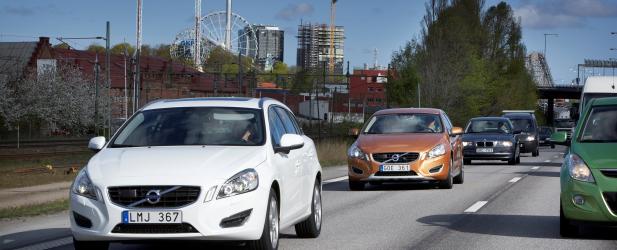
In May, both Euro NCAP and the Australasian New Car Assessment Program said they had found that low-speed autonomous emergency braking (AEB) technology leads to a 38% reduction in real-world, rear end crashes. The organisations said they'd make AEB technology a key metric in the safety rating of new vehicles.
Insurers in the UK are already responding with lower rates for cars equipped with AEB. In May, Thatcham Research Group did a study in which it obtained 500 insurance quotes for five pairs of cars, identical except that one of the pair had AEB. On average, policies for cars with AEB were almost £80 cheaper. Thatcham attributed this to an 18% reduction in third-party injury claims for vehicles with autonomous emergency braking.
In the US, analysis of insurance claims by the Highway Loss Data Institute (HLDI) also found reductions in claims when cars had forward-crash avoidance systems. But, according to the Insurance Institute for Highway Safety/HLD's website, "the jury is still out on many other advanced crash avoidance technologies, which aren't yet widespread enough for researchers to analyse their effectiveness".
Many more such studies need to be done before insurance companies can have a true understanding of their impact, according to Deke Phillips, director, commercial insurance at LexisNexis Risk Solutions, a provider of insurance data, analytics and related services. They need to be conducted at larger scale for longer time periods with more drivers, and on a greater variety of traffic and road conditions. The studies also will need to be carried out in many countries and regions.
In the US, in addition to understanding how ADAS affects risk ratings, insurers will need to have solid data in order to convince state insurance regulators to accept discount plans. "As more manufacturers roll out these system, in three to five years we'll be at a point where we will be ready to go to states and filing for rate discounts for an advanced safety system that [reduces collisions]," Phillips says. In the case of small commercial vehicles, such as vans and pickup trucks, he adds, "I'd be confident using personal lines data to develop an actuarially sound model."
A reduced likelihood of crashing for a driver whose car has advanced safety systems should translate to lower insurance rates. The effect on the insurer's bottom line is less clear.
High tech, high cost
"It's not as simple as looking at the kinds of accidents these systems will eliminate," says David Lukens, director of telematics for LexisNexis Risk Solutions. Lukens previously oversaw a group that built models to predict risk based on automotive safety systems.
Even when technology reduces the frequency and severity of accidents, the extra cost of safety systems might make an individual crash more expensive, he says.
Moreover, when safety systems first come onto the market, their design might make accidents even more costly than they otherwise might be, Lukens says. For example, sensors that detect the distance from the car in front are often located in the bumper. "The low impact accidents are far more common than those that cause serious injury. So if you add cost to little fender benders, it increases costs to the bottom line," he says.
Co-dependent
Andreas Mai, director of smart connected vehicles at Cisco, identifies a tricky aspect of basing risk ratings in part on the vehicle itself. The insured driver is much safer when she's driving her car with AEB, and she may depend on it. But what happens if, for example, she rents a car without the system?
Mai says: "When someone who has become used to these systems suddenly has to drive a vehicle that is not equipped as such, that is a combination the insurance company will be keen to detect and charge a premium for. It is definitely a higher risk."
The bottom line
Reducing accident frequency may erode insurers' profit margins, according to Phillips. He says, "The insurance marketplace depends on a certain level of 'unknown risk premium' in order to continually exploit the delta between the probable total cost of risk over time for an individual or business and the cost to transfer that risk via insurance premiums."
Of course, the real bottom line isn't financial, Lukens adds. "Airbags still have added cost to accidents but they do save lives."
None of these experts was aware of any insurers that are already offering discounts for vehicles with these safety systems. But Mai says: "It's a trend that is coming at the industry at full speed. Those that embrace it and find new mechanisms to identify and assess the risk attached to a vehicle-driver combination will be the winners."
This article originally appeared in the TU-Automotive - Tracking Automotive Technology

